The Siamese fighting fish (Betta splendens), commonly known as the betta, is a popular fish in the aquarium trade. Bettas are a member of the gourami family and are known to be highly territorial. Males in particular are prone to high levels of aggression and will attack each other if housed in the same tank. If there is no means of escape, this will usually result in the death of one or both of the fish. Female bettas can also become territorial towards each other if they are housed in too small an aquarium. It is typically not recommended to keep male and female bettas together, except temporarily for breeding purposes which should always be undertaken with caution.
This species is native to the Mekong basin of Laos, Cambodia, Vietnam and Thailand. The fish can be found in standing waters of canals, rice paddies and floodplains.It is listed as Vulnerable by the IUCN.
Description
B. splendens usually grows to a length of about 6.5 cm (2.6 in).Although aquarium specimens are widely known for their brilliant colours and large, flowing fins, the natural coloration of B. splendens are generally dull green, brown and grey, and the fins of wild specimens are short. In the wild, they exhibit strong colours only when agitated. In captivity, they have been selectively bred to display a vibrant array of colours and tail types.
History
Some people of Thailand and Malaysia are known to have collected these fish prior to the 19th century from the wild which are line-bred for aggression in eastern Thailand.
In the wild, betta spar for only a few minutes before one fish backs off. Bred specifically for heightened aggression, domesticated betta matches can go on for much longer, with winners determined by a willingness to continue fighting. Once a fish retreats, the match is over.
Seeing the popularity of these fights, the king of Thailand started licensing and collecting these fighting fish. In 1840, he gave some of his prized fish to a man who, in turn, gave them to Theodore Edward Cantor, a medical scientist. Nine years later, Cantor wrote an article describing them under the name Macropodus pugnax. In 1909, the ichthyologist Charles Tate Regan, upon realizing a species was already named Macropodus pugnax, renamed the domesticated Siamese fighting fish Betta splendens.
The vernacular name "plakat", often applied to the short-finned ornamental strains, derived from pla kad which means "fighting fish", is the Thai name for all members of the B. splendens species complex (as all of which have aggressive tendencies in the wild and all are extensively line-bred for aggression in eastern Thailand) which doesn't really restrict to one specific strain of the Siamese fighting fish. So the term "fighting fish" comes in use to generalize all the members of the B. splendens species complex including the Siamese fighting fish.
Diet
Betta splendens feed on zooplankton, crustaceans, and the larvae of mosquitoes and other water-bound insects.In captivity they can be fed a varied diet of pellets or frozen foods such as brine shrimp, bloodworms, daphnia and many others.
Despite myths that they will feed on any plant matter in the tank, they are naturally insectivores and do not typically or naturally consume vegetation.
Reproduction and Early Development
Male bettas will flare their gills, spread their fins and twist their bodies in a dance if interested in a female. If the female is also interested she will darken in colour and develop vertical lines known as breeding bars as a response. Males build bubble nests of various sizes and thicknesses at the surface of the water. Most tend to do this regularly even if there is no female present.
Plants or rocks that break the surface often form a base for bubble nests. The act of spawning itself is called a "nuptial embrace", for the male wraps his body around the female; around 10–40 eggs are released during each embrace, until the female is exhausted of eggs. The male, in his turn, releases milt into the water, and fertilization takes place externally. During and after spawning, the male uses his mouth to retrieve sinking eggs and deposit them in the bubble nest (during mating the female sometimes assists her partner, but more often she simply devours all the eggs she manages to catch). Once the female has released all of her eggs, she is chased away from the male's territory, as she will likely eat the eggs.If she is not removed from the tank then she will most likely be killed by the male.
The eggs will remain in the male's care. He carefully keeps them in his bubble nest, making sure none fall to the bottom, repairing the bubble nest as needed. Incubation lasts for 24–36 hours; newly hatched larvae remain in the nest for the next two to three days until their yolk sacs are fully absorbed. Afterwards, the fry leave the nest and the free-swimming stage begins. In this first period of their lives, B. splendens fry are totally dependent on their gills; the labyrinth organ which allows the species to breathe atmospheric oxygen typically develops at three to six weeks of age, depending on the general growth rate, which can be highly variable. B. splendens can reach sexual maturity at an age as early as 4–5 months.
In The Aquarium
Water
Betta species prefer a water temperature of around 75–82 °F (24–28 °C) but have been seen to survive temporarily at the extremes of 56 °F (13 °C) or 95 °F (35 °C). When kept in colder climates, aquarium heaters are recommended.
Bettas are also affected by the pH levels of the water. Ideal levels for Bettas would be at a neutral pH (7.0) However, Bettas are slightly tolerant towards the pH levels.They have an organ known as the labyrinth organ which allows them to breathe air at the water's surface. This organ was thought to allow the fish to be kept in unmaintained aquaria,but this is a misconception, as poor water quality makes all tropical fish, including Betta splendens, more susceptible to diseases such as fin rot.
Properly kept and fed a correct diet, Siamese fighting fish generally live between 3 and 5 years in captivity, but may live between 7 and 10 years in rare cases.
Aquarium size and Cohabitants
It is popular to keep betta fish in very small containers, such as bowls for display around the home. Contrary to popular belief, this can cause health issues and lead to an early death for the fish.Bettas prefer to be kept in larger tanks or community tanks. A commonly recommended tank size is 20 litres, or 5 gallons, and bigger is advisable, while 2.5 gallons is the minimum.
Bettas can cohabit with fish that are bottom feeders. Male bettas should not be kept with other male bettas, and all bettas may not be compatible with other colorful fish species.However, keeping more than one male in the similar tank is possible, assuming you have more space and dense plant, though it depends on the personality or the background of the fish because there are bettas that aren't line-bred for aggression, though it is considered best practice to isolate pairs for breeding purposes.
Varieties
B. splendens can be hybridized with B. imbellis, B. mahachaiensis, and B. smaragdina, though with the latter, the fry tend to have low survival rates. In addition to these hybrids within the genus Betta, intergeneric hybridizing of Betta splendens and Macropodus opercularis, the paradise fish, has been reported. A fairly recent variety to hit the markets is the king betta, a variety of largely unknown provenance which may or may not be derived from crossing B. splendens with B. raja.
Breeders around the world continue to develop new varieties. Often, the males of the species are sold preferentially in stores because of their beauty, compared to the females. Females almost never develop fins as showy as males of the same type and are often more subdued in coloration, though some breeders manage to get females with fairly long fins and bright colors.
Colors
Wild fish exhibit strong colours only when agitated. Breeders have been able to make this coloration permanent, and a wide variety of hues breed true. Colours available to the aquarist include red, orange, yellow, blue, steel blue, turquoise/green, black, pastel, white ("opaque" white, not to be confused with albino) and multi-coloured fish.
Bettas are found in many different colours due to different layers of pigmentation in their skin. The layers (from furthest within to the outer layer) consists of red, yellow, black, iridescent (blue and green), and metallic (not a colour of its own, but reacts with the other colours to change how they are perceived). Any combination of these layers can be present, leading to a wide variety of colours.
The shades of blue, turquoise, and green are slightly iridescent, and can appear to change colour with different lighting conditions or viewing angles; this is because these colours (unlike black or red) are not due to pigments, but created through refraction within a layer of translucent guanine crystals. Breeders have also developed different colour patterns such as marble and butterfly, as well as metallic shades through hybridization like copper, gold, or platinum (these were obtained by crossing B. splendens to other Betta species).
A true albino betta has been feverishly sought since one recorded appearance in 1927, and another in 1953. Neither of these was able to establish a line of true albinos. In 1994, a hobbyist named Kenjiro Tanaka claimed to have successfully bred albino bettas.
Some bettas will change colours throughout their lifetime (known as marbling), attributed to a transposon.
Common Colours
- Red
- Blue
- Yellow
- Opaque
- Black
- White
- Orange
Rarer Colours
- Metallic
- Turquoise
- Copper
- Lavender
- Mustard Gas
- Grizzle
- Marble
- Green
- Koi – Patches of red, orange, black and white on body and fins, similar to a koi carp.
Colour Patterens
Solid – The entire fish is one colour with no variations
Bi-colour – The fins must be a different colour to the body to be a Bi-colour.
Cambodian – The body is pale, almost colourless, and the fins are a solid colour
Butterfly – The fins have distinct bands of colours
Marble – Irregular patterns throughout the body and fin
Piebald – pale flesh-coloured face irrespective of the body colour.
Full Mask – the face being the same colour as the body rather than what it would naturally be which would be darker than the body
Dragon – rich strong base colour with the scales on the main part of the body a pale iridescent
Multicolour – 3 or more colours on the body that does not fit into any other pattern category
Pastel – A light shade of colour seen only on the fins, body remains a flesh hue.
Behaviour
Males and females flare or puff out their gill covers (opercula) to appear more impressive, either to intimidate other rivals or as an act of courtship. Other reasons for flaring can include when they are intimidated by movement or change of scene in their environments. Both sexes display pale horizontal bars if stressed or frightened. However, such colour changes, common in females of any age, are rare in mature males due to their intensity of colour. Females often flare at other females, especially when setting up a pecking order. Flirting fish behave similarly, with vertical instead of horizontal stripes indicating a willingness and readiness to breed (females only). Betta splendens enjoy a decorated tank, being a territorial fish it is necessary to establish territory even when housed alone. They may set up a territory centered on a plant or rocky alcove, sometimes becoming highly possessive of it and aggressive toward trespassing rivals. This is the reason why when kept with other fish the minimum tank size should be 45 litres (about 10 gallons). Contrary to popular belief, bettas are compatible with many other species of aquarium fish.Given the proper parameters bettas will be known to only be aggressive towards smaller and slower fish than themselves such as guppies.
The aggression of this fish has been studied by ethologists and comparative psychologists.These fish have historically been the objects of gambling; two male fish are pitted against each other to fight and bets are placed on which one will win. One fish will arise the victor, the fight continuing until one participant is submissive. These competitions can result in the death of either one or both fish depending on the seriousness of their injuries. To avoid fights over territory, male Siamese fighting fish are best isolated from one another. Males will occasionally even respond aggressively to their own reflections in a mirror. Though this is obviously safer than exposing the fish to another male, prolonged sight of their reflection may lead to stress in some individuals. Not all Siamese fighting fish respond negatively to other males, especially when the tank is large enough for each fish to create their own designated territory.
In Popular Culture
The titular character in the novel Rumble Fish (novel) and subsequent film Rumble Fish is a Siamese fighting fish.In both, the character Motorcycle Boy is fascinated with the creatures and dubs them "rumble fish." He speculates that if the fish were to be set free in the river, they wouldn't behave so aggressively. A common misconception on the fish is they should live in vases or bowls, but this has been proven it damages their health and lowers their mood.
A scene in the James Bond film From Russia with Love shows three Siamese fighting fish in an aquarium as the villain Ernst Stavro Blofeld likens the modus operandi of his criminal organisation, SPECTRE to one of the fish that observes as the other two fight to the death, then kills the weakened victor.
source: Wiki

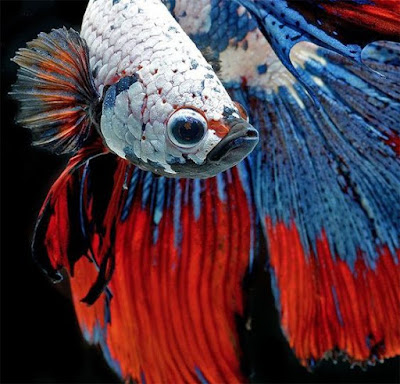
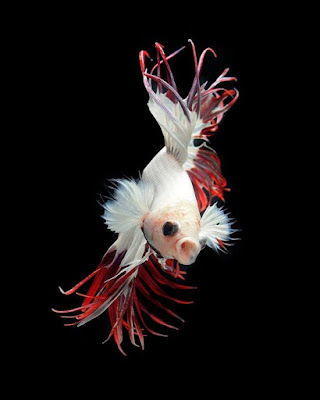
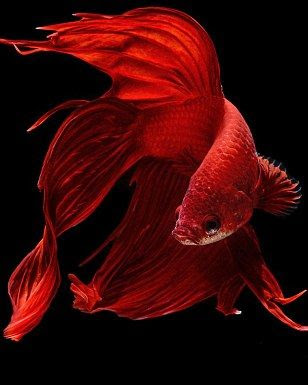
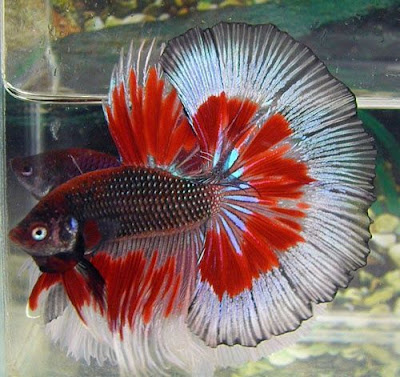

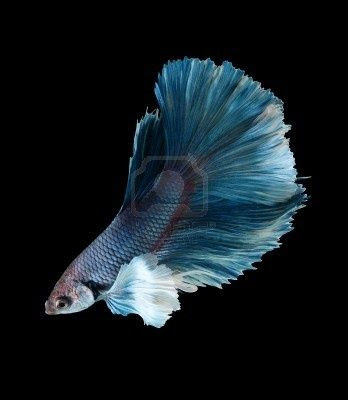













There are many options for a betta fish aquariums to make them beautifull and natural, but some wise aquarist prefer best live plants for cute betta. Be the one of them to decorify your for good health and growth :)
ReplyDelete